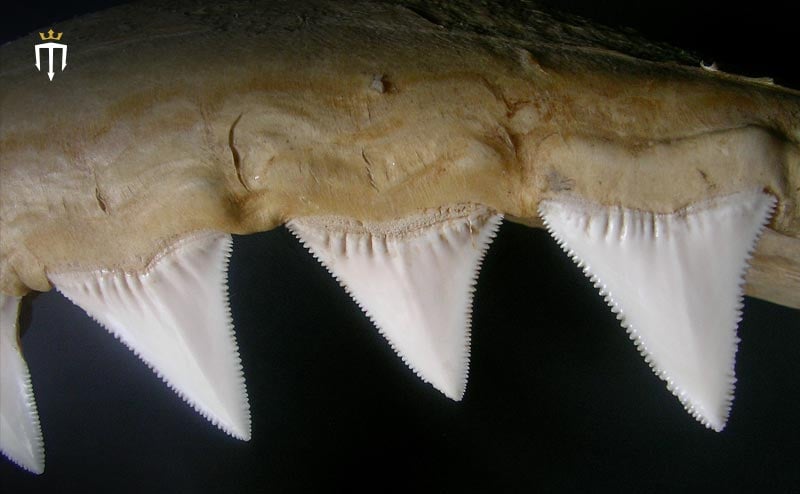Sharks are some of the most amazing and precious creatures on our planet. With close to 500 species, almost all of them have extraordinary biology. Shark teeth are as extraordinary!
One of their better known traits is that they constantly grow and lose their teeth during their lifespans. But how much do you actually know about this unusual characteristic?
Well, to start with, it is estimated that sharks will shed approximately 35,000 teeth during their lifetime – and in general, every one of them will be replaced!
Shark teeth grow in rows and there can be up to 15 rows in a shark’s jaws. These rows act like a very slow conveyor belt, moving from back to front before eventually dropping out. Even Spielberg managed to represent it relatively correctly in “Jaws”, though they may have had a limited tooth budget (Google “Jaws movie poster” or “Jaws shark replica” to see what we mean).
The teeth come in 4 basic types and the type of tooth a shark species has depends largely on what they eat!

Dense Flattened shark teeth
These teeth are used for crushing food (like shells and shrimps) and are found in species like nurse sharks and leopard sharks.

Needle-like shark teeth
These teeth are excellent for catching fish or other small sea creatures and are very effective at grasping slippery animals like squid. These are found in hunters such as bull sharks and blue sharks, for example.

Pointed lower teeth and triangular upper teeth
Often what people imagine when they think of shark teeth, this type of tooth is found in the great white. This configuration is very effective for cutting larger prey, such as mammals and larger fish. Looking close, the serrated edge of the teeth is what makes them such an effective cutting tool.

Non-functional teeth
Of course, not all sharks eat larger prey, nor need to even hold smaller prey. We’re thinking of course of gentle giants such as whale sharks and basking sharks. Because these species eat plankton, their teeth have become redundant and, hence, non-functional. But trust us, they are still there.
Eyes open for shark teeth!
Shark teeth are so specialised that most sharks can be identified by their them and scientists even use it as a technique on fossilised teeth to try categorising ancient and extinct species.
However, while shark teeth are plentiful, they are not as strong nor durable as ours. Their teeth have no roots and tend to fall out easily, which is why they are wired to constantly renew their dentures and allow us divers to find them easily on the ocean floor.
So next time you dive where sharks are plentiful, keep an eye on the seabed to see if you can find any and identify the species by any cast off.
Join us on Blue Voyager for some amazing shark encounters!



